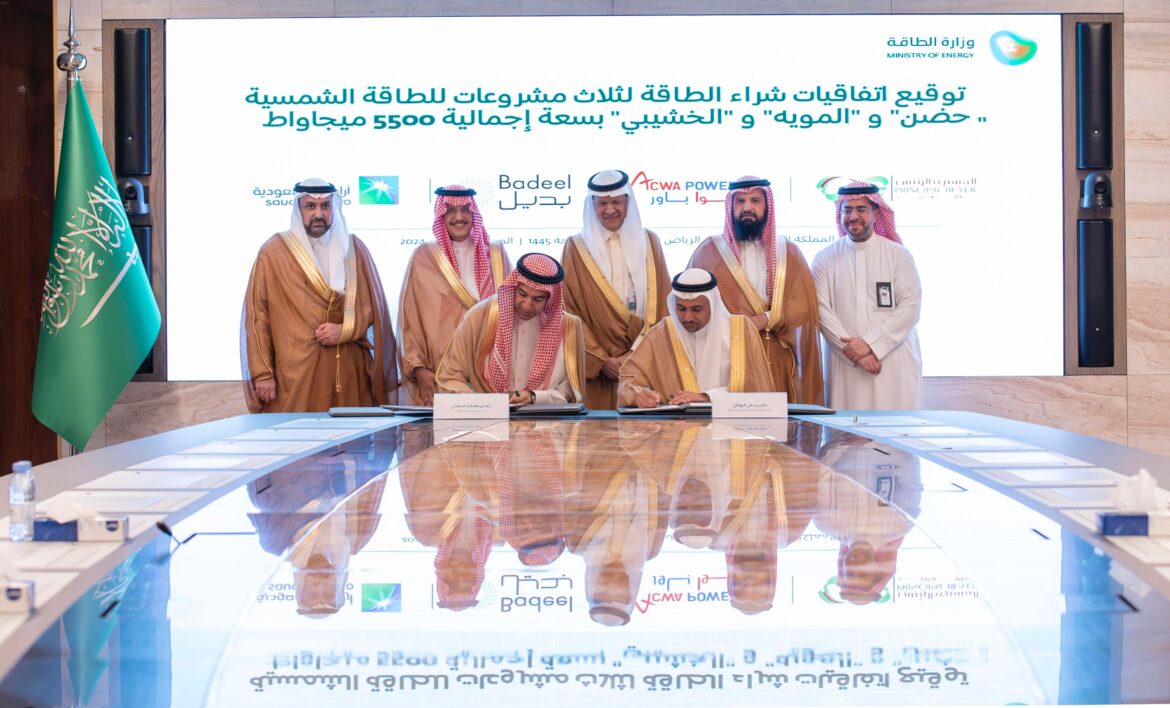ACWA Power, the Water and Electricity Holding Company (Badeel), a wholly owned company of PIF and Saudi Aramco Power Company (SAPCO), a wholly owned subsidiary of Aramco, have announced the signing of power purchase agreements (PPAs) with the Saudi Power Procurement Company (SPPC) for the development and operation of three major new solar photovoltaic (PV) projects in Saudi Arabia.
The parties shared that the Haden and Muwayh plants in the Makkah region will each have individual capacities of 2,000 MW, while the Al Khushaybi plant in the Qassim region will have a capacity of 1,500 MW.
The projects will be jointly owned by Badeel, ACWA Power and SAPCO.
The three entities are currently developing several projects with a total capacity of 13,600 MW, involving over US$9 billion of investment from PIF and its partners.
These joint projects include:
- Sudair,
- Shuaibah 2,
- Ar Rass 2,
- Al Kahfah, and
- Saad 2.
The new solar PV facilities are expected to contribute an additional 5,500 MW of renewable energy to the national power grid once operational in the first half of 2027.
Financial closes are expected by the fourth quarter of 2024.
Raad Al-Saady, Vice Chairman and Managing Director of ACWA Power, said that with these projects, the company reaches 35,000 MW of renewable capacity that it controls worldwide, combined with almost 20,000 MWh of storage capacity.
Sultan AlNabulsi, Acting Chief Executive Officer from Badeel, commented: “Badeel is proud to achieve this milestone for the new three Solar PV Projects, as an anchor sponsor under PIF to achieve its commitment to develop 70% of Saudi Arabia’s renewable energy by 2030. This comes as part of PIF continued efforts to progress towards unlocking the capabilities of promising sectors and achieving Saudi Arabia’s ambitions in Renewable Energy.”
Waleed Al Saif, Aramco SVP of New Energies, said: “Through our recently established new energies portfolio, Aramco aims to support the growth of alternative energy solutions including renewables, carbon capture and storage, and lower carbon hydrogen.”



